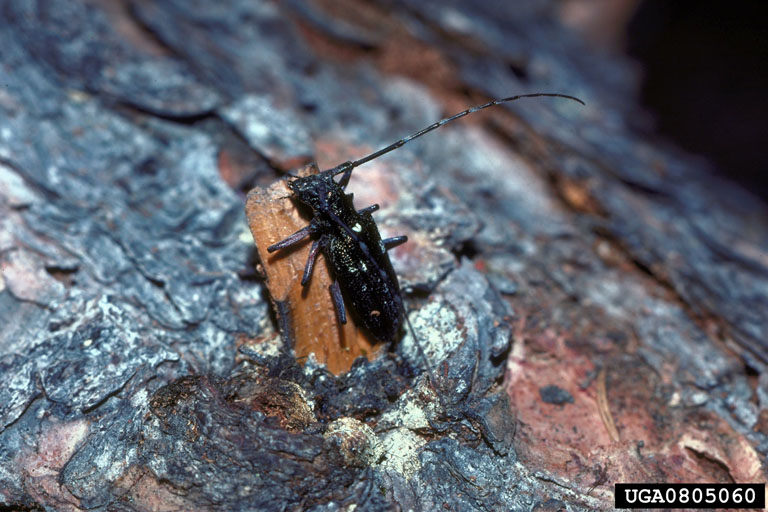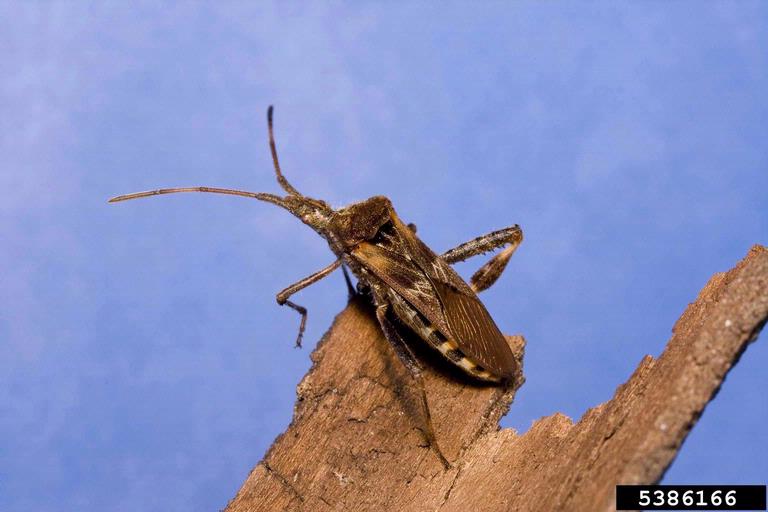The Asian longhorned beetle (Anoplophora glabripennis) is an invasive insect native to China and Korea. It has been found in Washington state as well as Eastern Canada, which raises concerns. Luckily, there are currently no known sightings of the Asian longhorned beetle in the Sea to Sky. This beetle has a lot of lookalikes, so here is a quick guide for differentiating it from similar species.
The Asian longhorned beetle is a large insect, reaching 20 – 35 mm in length. It has antennae with 11 segments, alternating blue-white and blue-black. It’s body is shiny black and has up to 20 white dots on its back. It also has bluish-white legs.
Why are we concerned about it?
This beetle attacks and kills many hardwood tree species, maple trees being its preferred host. Its larvae feed on the trunks and limbs of trees and burrow extensive tunnels into the wood, which can kill even the healthiest trees. This can cause a significant reduction in wood supply, which is a concern for the forestry industry. If you suspect you’ve found an Asian longhorned beetle in the Sea to Sky, please report the sighting to SSISC.
Native Lookalikes:
Banded alder beetle (Rosalia funebris)

Native Banded alder borer Patrick Loes, Bugwood.org
Instead of dots on its torso, the Banded alder beetle has alternative transverse black and grey bands across its body. One easy way to distinguish this species from the Asian longhorned beetle is to look at the segment directly behind the head.
On this segment, the Banded alder beetle has a white band with a single, large, black spot in the middle. The segment on the Asian longhorned beetle is entirely black.
Whitespotted sawyer beetle (Monochamus scutellatus)

Native Whitespotted Sawyer Beetle, Edward H. Holsten, USDA Forest Service, Bugwood.org
While the Whitespotted sawyer beetle grows similar in size to the Asian longhorned beetle, an easy way to identify it is its single white spot between its wing covers.
Western conifer seed bug (Leptoglossus occidentalis)

Western conifer-seed bug (Joseph Berger, Bugwood.org)
The Western conifer seed bug is slightly smaller than the Asian longhorned beetle (15 – 20 mm long). Its body is reddish-brown to greying-brown, while the Asian longhorned beetle is more blueish-black in colour.
This species prefers coniferous trees, like pine trees.
Invasive Lookalike:
Citrus longhorned beetle (Anoplophora chinensis)

Invasive Citrus longhorned beetle, Art Wagner, USDA – APHIS, Bugwood.org
The Citrus longhorned beetle is also invasive to North America and originates from Eastern Asia. It looks extremely similar to the Asian longhorned beetle, but one key difference is that the top part of the wing covers closest to the head is rough on the Citrus longhorned beetle, whereas it is smooth on the Asian longhorned beetle.
According to the Canadian Food Inspection Agency, this species has been intercepted once at the Canadian border and has never been found in the country. If you think you’ve found a Citrus longhorned beetle in the Sea to Sky, please report any sightings.
Learn more:







Add Comment